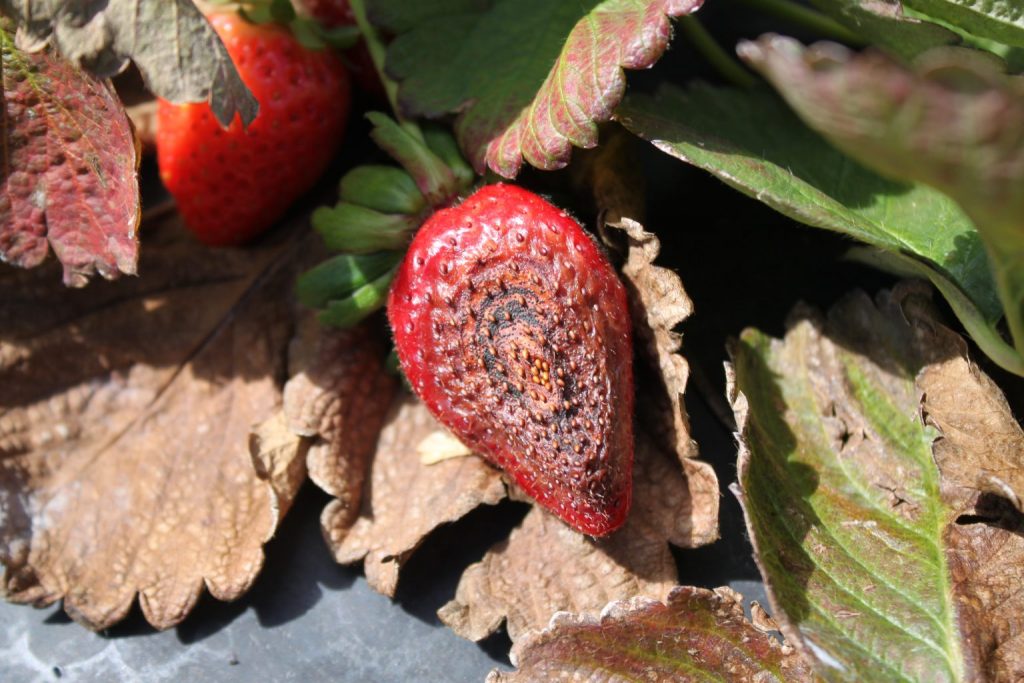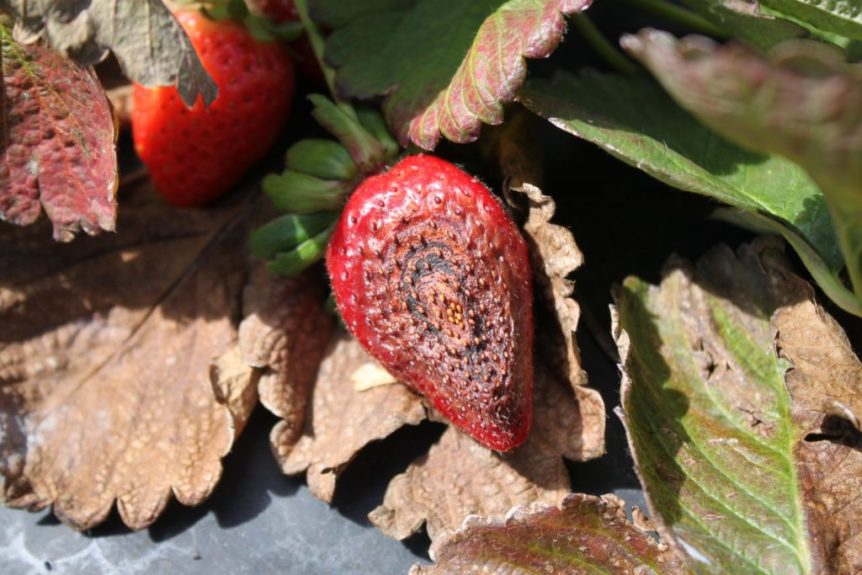
By Clint Thompson
Neopestalotiopsis disease in strawberries remains a concern for Southeast growers.
Natalia Peres, professor of plant pathology at the University of Florida Institute of Food and Agricultural Sciences (UF/IFAS) Gulf Coast Research and Education Center, provided producers tips on how to control the disease during her presentation at the Southeast Regional Fruit and Vegetable Conference in Savannah, Georgia.
Peres classified the disease as “emerging,” because it was during the 2017-18 season that the disease was first observed in Florida, likely via transplants. It worsened during the 2019-20 season and has since spread to strawberry-producing states like Georgia, Alabama, South Carolina and North Carolina.
Symptoms
It can lead to severe leaf spotting and blighting under favorable weather conditions, specifically during extended periods of wetness.
The best opportunity for growers to overcome the disease is to manage it before the season. She stressed that farmers have a much better chance to control it if they start with low levels of inoculum and/or cultivars that are not highly susceptible. Producers should also communicate with nursery suppliers to avoid obtaining plants that are known to be infected.
Eradication Key for Growers
Eradication is also vital since growers can reduce the production of the initial inoculum by destroying the sources of it. This is key since the inoculum has been proven to survive from one field to the next.
“Now that we know that it can survive there, one of my recommendations for our growers in Florida is to manage that crop residue as good as we can of what’s left in the field after the season,” Peres said.
There are effective registered products like Thiram, Switch and a few DMI fungicides like Rhyme and Orbit.
Sanitation measures also help to reduce the inoculum. These tactics include washing hands with soap/water or ethanol; wash clothes; clean shoes; and clean equipment being used.










